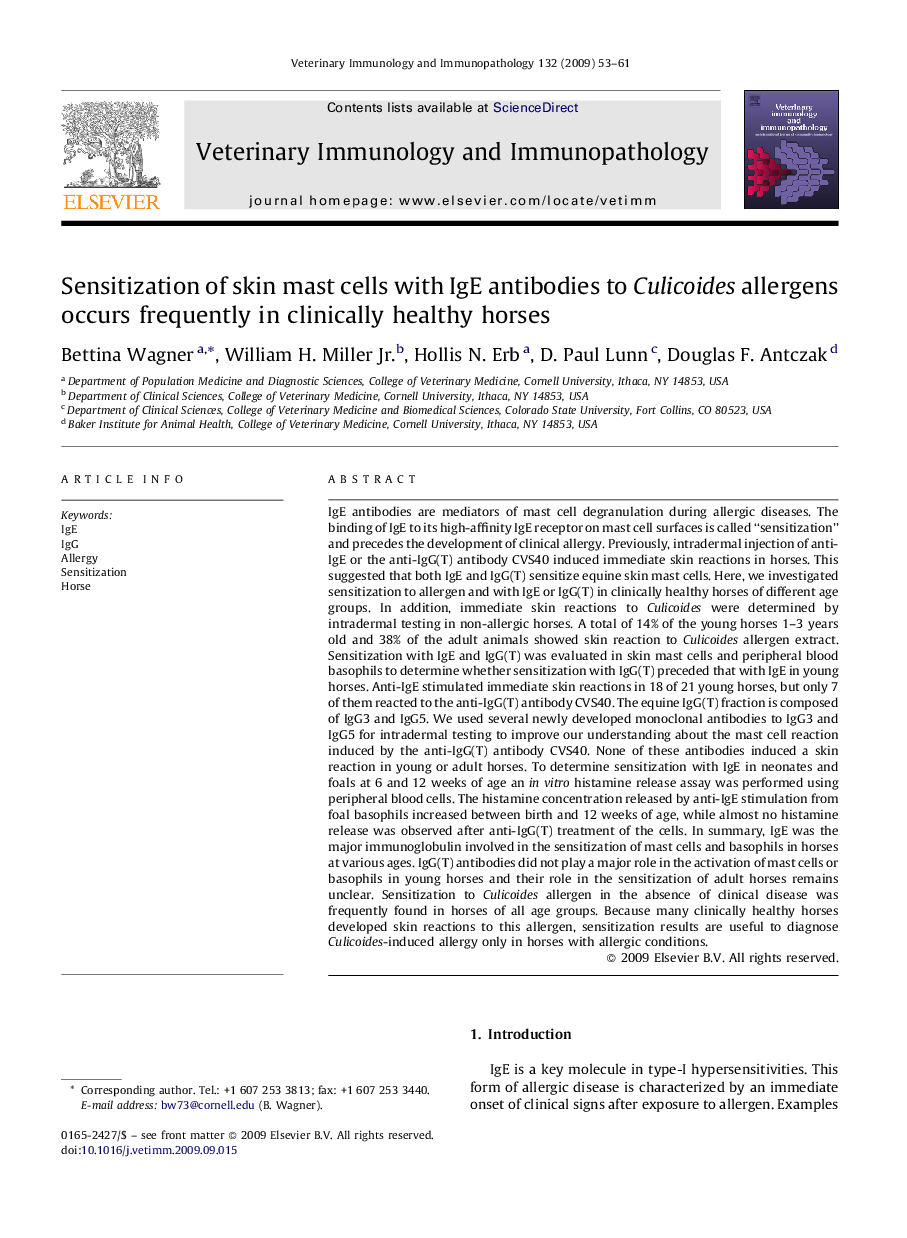| کد مقاله | کد نشریه | سال انتشار | مقاله انگلیسی | نسخه تمام متن |
|---|---|---|---|---|
| 2462592 | 1111415 | 2009 | 9 صفحه PDF | دانلود رایگان |

IgE antibodies are mediators of mast cell degranulation during allergic diseases. The binding of IgE to its high-affinity IgE receptor on mast cell surfaces is called “sensitization” and precedes the development of clinical allergy. Previously, intradermal injection of anti-IgE or the anti-IgG(T) antibody CVS40 induced immediate skin reactions in horses. This suggested that both IgE and IgG(T) sensitize equine skin mast cells. Here, we investigated sensitization to allergen and with IgE or IgG(T) in clinically healthy horses of different age groups. In addition, immediate skin reactions to Culicoides were determined by intradermal testing in non-allergic horses. A total of 14% of the young horses 1–3 years old and 38% of the adult animals showed skin reaction to Culicoides allergen extract. Sensitization with IgE and IgG(T) was evaluated in skin mast cells and peripheral blood basophils to determine whether sensitization with IgG(T) preceded that with IgE in young horses. Anti-IgE stimulated immediate skin reactions in 18 of 21 young horses, but only 7 of them reacted to the anti-IgG(T) antibody CVS40. The equine IgG(T) fraction is composed of IgG3 and IgG5. We used several newly developed monoclonal antibodies to IgG3 and IgG5 for intradermal testing to improve our understanding about the mast cell reaction induced by the anti-IgG(T) antibody CVS40. None of these antibodies induced a skin reaction in young or adult horses. To determine sensitization with IgE in neonates and foals at 6 and 12 weeks of age an in vitro histamine release assay was performed using peripheral blood cells. The histamine concentration released by anti-IgE stimulation from foal basophils increased between birth and 12 weeks of age, while almost no histamine release was observed after anti-IgG(T) treatment of the cells. In summary, IgE was the major immunoglobulin involved in the sensitization of mast cells and basophils in horses at various ages. IgG(T) antibodies did not play a major role in the activation of mast cells or basophils in young horses and their role in the sensitization of adult horses remains unclear. Sensitization to Culicoides allergen in the absence of clinical disease was frequently found in horses of all age groups. Because many clinically healthy horses developed skin reactions to this allergen, sensitization results are useful to diagnose Culicoides-induced allergy only in horses with allergic conditions.
Journal: Veterinary Immunology and Immunopathology - Volume 132, Issue 1, 15 November 2009, Pages 53–61